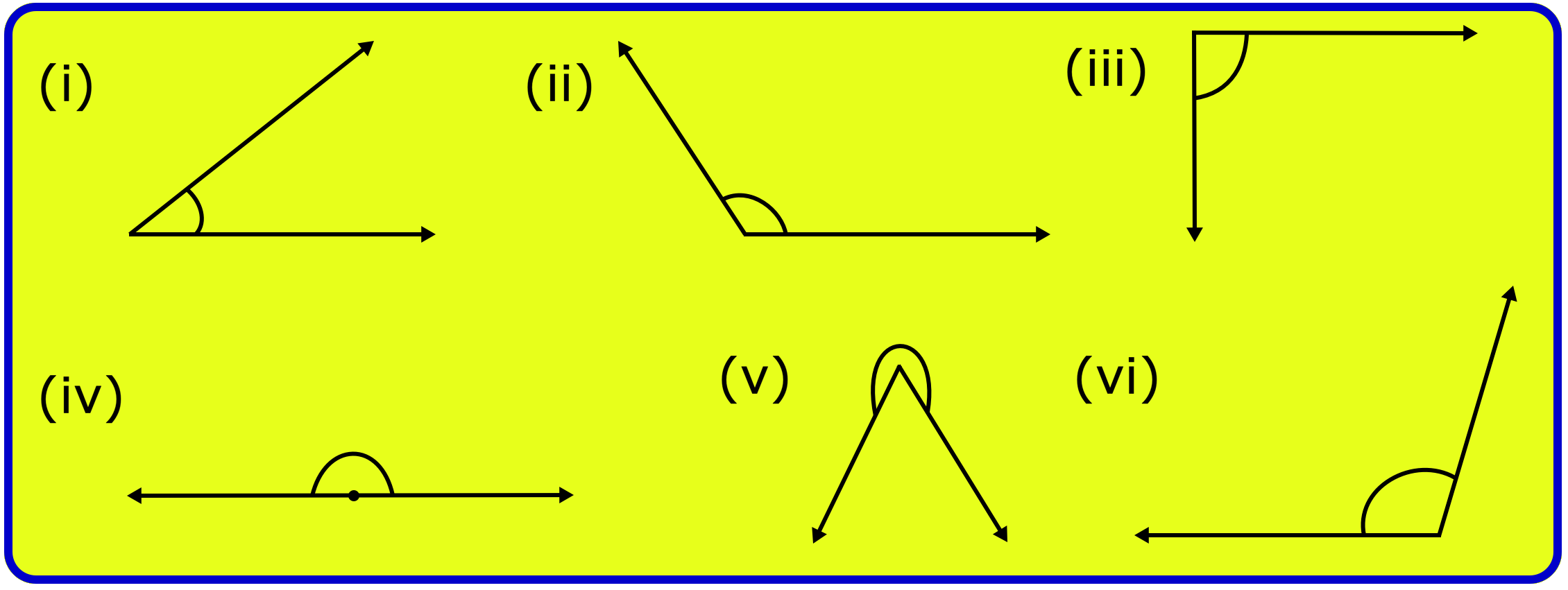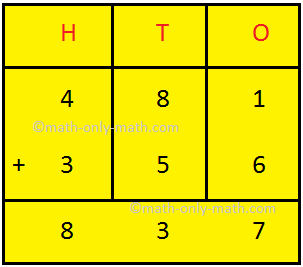Subscribe to our YouTube channel for the latest videos, updates, and tips.
Home | About Us | Contact Us | Privacy | Math Blog
Rationalization of Surds
We will discuss about the rationalization of surds. When the denominator of an expression is a surd which can be reduced to an expression with rational denominator, this process is known as rationalizing the denominator of the surd.
If a surd or surd with rational numbers present in the denominator of an equation, to simplify it or to omit the surds from the denominator, rationalization of surds is used. Surds are irrational numbers but if multiply a surd with a suitable factor, result of multiplication will be rational number. This is the basic principle involved in rationalization of surds. The factor of multiplication by which rationalization is done, is called as rationalizing factor. If the product of two surds is a rational number, then each surd is a rationalizing factor to other. Like if √2 is multiplied with √2, it will 2, which is rational number, so √2 is rationalizing factor of √2.
In other words, the process of reducing a given surd to a rational form after multiplying it by a suitable surd is known as rationalization.
When the product of two surds is a rational number, then each of the two surds is called rationalizing factor of the other.
For example, √5√2 is a surd where √5 is numerator and √2 is denominator. Now for rationalization of surds, if we multiply both numerator and denominator by √2, then denominator will be a rational number.
√5√2 = √5×√2√2×√2
= √102.
So after rationalization of surd √5√2, it is becoming √102 where √2 is used as rationalization factor.
In other words, if the product of two surds is rational, then each is called a rationalizing factor of the other and each is said to be rationalized by the other.
For complex surds where the surds are in order 2, conjugates are used to rationalize the surds. This comes the from the formula a2−b2=(a+b)(a−b). So in complex surds order 2 surds get squared off and denominators are converted to a rational number.
Like for example, if rationalization of the complex surd 12√2−1 to be done, denominator 2√2−1 is to converted to a rational number. If a = 2√2 and b = 1, then denominator is (a - b), if we multiply (a + b), it will a2−b2 and 2√2 will be squared off.
12√2−1
= (2√2+1)(2√2−1)(2√2+1)
= (2√2+1)2−1
= 2√2 + 1.
For complex surds in the denominator in other forms or in order more than 2, can be rationalized by using suitable multiplication factors.
Examples of rationalization of surds:
1. For example, the rationalizing factor of √5 is √5 and rationalizing factor of ∛2 is ∛2^2 or ∛4. Since, √5 × √5 = 5 and ∛2 × ∛2^2 = ∛(2 × 2^2) = ∛2^3 = 2
2. (a√z) × (b√z) = (a × b) × (√z × √z) =
ab(√z)^2 = abz, which is rational. Therefore, each of the surds a√z and b√z is
a rationalizing factor of the other.
3. √5 × 2√5 = 2 × (√5)^2 = 3 × 5 = 15, which is rational. Therefore, each of the surds √5 and 2√5 is a rationalizing factor of the other.
4. (√a + √b) × (√a - √b) = (√a)^2 - (√b)^2 = a - b, which is rational. Therefore, each of the surds (√a + √b) and (√a - √b) is a rationalizing factor of the other.
5. (x√a + y√b) × (x√a - y√b) = (x√a)^2 - (y√b)^2 = ax - by, which is rational. Therefore, each of the surds (x√a + y√b) and (x√a - y√b) is a rationalizing factor of the other.
6. (4√7 + √3) × (4√7 - √3) = (4√7)^2 - (√3)^2 = 112 - 3 = 109, which is rational. Therefore, each of the surd factors (4√7 + √3) and (4√7 - √3) is a rationalizing factor of the other.
7. Also rationalizing factor of ∛(ab^2c^2) is ∛(a^2bc) because ∛(ab^2c^2) × ∛(a^2bc) = abc.
8. Rationalize the following surds.
2√32√2, 6√3, 3√53√3
Solution:
2√32√2
= √3×√2√2×√2
= √62.
62√3
= 6×√3√3×√3
= 6√33
= 2√3.
3√53√3
Here the denominator is 3√3 or 313, for this surd of order 3, rationalization factor will be 323.
= 3√5×323313×323
= 3√5×3√323
= 3√453.
9. Find the rationalizing factor of (√x - ∛y).
Solution:
Let, √x = x^1/2 = a and ∛y = y^1/3 = b.
Now, the order of the surds √x and ∛y are 2 and 3 respectively and the L.C.M. of 2 and 3 is 6.
Therefore,
a^6 = (x^1/2)^6 = x^3 and b^6 = (y^1/3)^6 = y^2.
Therefore, a^6 and b^6 both are rational and as such (a^6 - b^6) is also rational.
Now, a^6 - b^6 = (a - b)(a^5 + a^4b + a^3b^2 + a^2b^3 + ab^4 + b^5)
Therefore the rationalizing factor of (a - b) = (√x - ∛y) is (a^5 + a^4b + a^3b^2 + a^2b^3 + ab^4 + b^5) = x^5/2 + x^2y^1/3 + x^3/2y^2/3 + xy + x^1/2y^4/3 + y^5/3
10. Rationalize the surd 2√2+12√2−1.
Solution:
= 2√2+12√2−1
As the denominator is 2√2−1, for rationalization of the surd, we need to multiply both numerator and denominator by the rationalizing factor 2√2+1.
= (2√2+1)(2√2+1)(2√2−1)(2√2+1)
= (2√2+1)22−1….. as we know (a+b)(a−b)=a2−b2
= (2√2)2+2×2√2×1+12
= 3+22√2.
11. Rationalize the surd √x√x−√y.
Solution:
√x√x−√y
As the denominator is (√x−√y), if √x = a and √y = b, denominator (a - b) is multiplied with (a + b) or (√x+√y), it will be rationalized.
= √x×(√x+√y)(√x−√y)(√x+√y)
= x+√xyx−y
12. Rationalize the surd 2√55√3−3√5.
Solution:
2√55√3−3√5
As the denominator is (5√3−3√5), if 5√3 = a and 3√5 = b, denominator (a - b) is multiplied with (a + b) or (5√3+3√5), it will be rationalized.
= 2√5×(5√3+3√5)(5√3−3√5)(5√3+3√5)
= 10√15+6×5(5√3)2−(3√5)2
= 10√15+3025×3−9×5
= 10√15+3075−45
= 10(√15+3)30
= 3+√15
● Surds
- Definitions of Surds
- Order of a Surd
- Equiradical Surds
- Pure and Mixed Surds
- Simple and Compound Surds
- Similar and Dissimilar Surds
- Comparison of Surds
- Addition and Subtraction of Surds
- Multiplication of Surds
- Division of Surds
- Rationalization of Surds
- Conjugate Surds
- Product of two unlike Quadratic Surds
- Express of a Simple Quadratic Surd
- Properties of Surds
- Rules of Surds
- Problems on Surds
11 and 12 Grade Math
From Rationalization of Surds to HOME PAGE
Didn't find what you were looking for? Or want to know more information about Math Only Math. Use this Google Search to find what you need.
Recent Articles
-
Formation of Numbers | Smallest and Greatest Number| Number Formation
Jul 14, 25 01:53 AM
In formation of numbers we will learn the numbers having different numbers of digits. We know that: (i) Greatest number of one digit = 9, -
5th Grade Geometry Practice Test | Angle | Triangle | Circle |Free Ans
Jul 14, 25 01:53 AM
In 5th grade geometry practice test you will get different types of practice questions on lines, types of angle, triangles, properties of triangles, classification of triangles, construction of triang… -
5th Grade Circle Worksheet | Free Worksheet with Answer |Practice Math
Jul 11, 25 02:14 PM
In 5th Grade Circle Worksheet you will get different types of questions on parts of a circle, relation between radius and diameter, interior of a circle, exterior of a circle and construction of circl… -
Construction of a Circle | Working Rules | Step-by-step Explanation |
Jul 09, 25 01:29 AM
Construction of a Circle when the length of its Radius is given. Working Rules | Step I: Open the compass such that its pointer be put on initial point (i.e. O) of ruler / scale and the pencil-end be… -
Combination of Addition and Subtraction | Mixed Addition & Subtraction
Jul 08, 25 02:32 PM
We will discuss here about the combination of addition and subtraction. The rules which can be used to solve the sums involving addition (+) and subtraction (-) together are: I: First add





New! Comments
Have your say about what you just read! Leave me a comment in the box below. Ask a Question or Answer a Question.